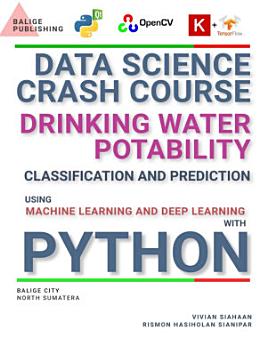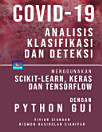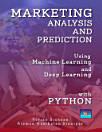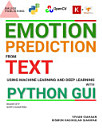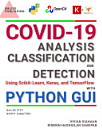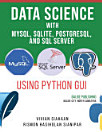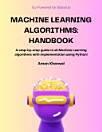DATA SCIENCE CRASH COURSE: Drinking Water Potability Classification and Prediction Using Machine Learning and Deep Learning with Python
About this ebook
The first step of the project involves data exploration, where we examine the dataset's structure and characteristics. We identify the target variable, "Potability," which indicates whether the water is safe to drink (1) or not (0). We check for any missing values and handle them appropriately to ensure the dataset's integrity.
Next, we analyze the distribution of features in the dataset to understand their statistical properties. We visualize the feature distributions through histograms, box plots, and density plots. This exploration helps us identify potential outliers or skewed features that might require preprocessing.
Before building the predictive models, we split the dataset into training and testing sets. The training set is used to train the machine learning models, while the testing set evaluates their performance on unseen data.
To start with machine learning models, we employ algorithms Logistic Regression, Support Vector Machines, K-Nearest Neighbors, Decision Trees, Random Forests, Gradient Boosting, Extreme Gradient Boosting, Light Gradient Boosting.. We use the Grid Search technique to optimize their hyperparameters, ensuring the best possible performance.
After evaluating and selecting the best-performing machine learning model, we explore deep learning techniques using an Artificial Neural Network (ANN). The ANN architecture consists of input, hidden, and output layers. We determine the optimal number of hidden layers and neurons through experimentation. To train the ANN, we use the training data and optimize the model's weights using backpropagation and gradient descent. We also employ techniques like dropout and batch normalization to prevent overfitting.
After training the models, we evaluate its performance on the test set. To gauge the model's accuracy, precision, recall, and F1-score, we generate a classification report. Additionally, we plot the training and validation accuracy as well as the loss during the training process to visualize the model's learning progress.
For further insights, we plot a confusion matrix, which provides a comprehensive view of the true positive, true negative, false positive, and false negative predictions. This helps us assess the model's performance in handling different classes.
Throughout the project, we prioritize model evaluation to ensure reliable predictions. We compute the accuracy score, which gives us an overall understanding of the model's correctness. The classification report provides detailed precision, recall, and F1-score for each class, highlighting how well the model predicts the positive and negative cases.
In conclusion, this data science crash course project focuses on drinking water potability classification and prediction using various machine learning and deep learning techniques in Python. The project begins with data exploration and feature distribution analysis, followed by the use of machine learning models with hyperparameter tuning through grid search. Subsequently, deep learning techniques using an Artificial Neural Network (ANN) are employed, and the model's performance is evaluated using multiple metrics. By following this comprehensive approach, we aim to build an accurate and robust model that can effectively predict drinking water potability and contribute to ensuring safe drinking water for communities.
Ratings and reviews
About the author
Vivian Siahaan is a fast-learner who likes to do new things. She was born, raised in Hinalang Bagasan, Balige, on the banks of Lake Toba, and completed high school education from SMAN 1 Balige. She started herself learning Java, Android, JavaScript, CSS, C ++, Python, R, Visual Basic, Visual C #, MATLAB, Mathematica, PHP, JSP, MySQL, SQL Server, Oracle, Access, and other programming languages. She studied programming from scratch, starting with the most basic syntax and logic, by building several simple and applicable GUI applications. Animation and games are fields of programming that are interests that she always wants to develop. Besides studying mathematical logic and programming, the author also has the pleasure of reading novels. Vivian Siahaan has written dozens of ebooks that have been published on Sparta Publisher: Data Structure with Java; Java Programming: Cookbook; C ++ Programming: Cookbook; C Programming For High Schools / Vocational Schools and Students; Java Programming for SMA / SMK; Java Tutorial: GUI, Graphics and Animation; Visual Basic Programming: From A to Z; Java Programming for Animation and Games; C # Programming for SMA / SMK and Students; MATLAB For Students and Researchers; Graphics in JavaScript: Quick Learning Series; JavaScript Image Processing Methods: From A to Z; Java GUI Case Study: AWT & Swing; Basic CSS and JavaScript; PHP / MySQL Programming: Cookbook; Visual Basic: Cookbook; C ++ Programming for High Schools / Vocational Schools and Students; Concepts and Practices of C ++; PHP / MySQL For Students; C # Programming: From A to Z; Visual Basic for SMA / SMK and Students; C # .NET and SQL Server for High School / Vocational School and Students. At the ANDI Yogyakarta publisher, Vivian Siahaan also wrote a number of books including: Python Programming Theory and Practice; Python GUI Programming; Python GUI and Database; Build From Zero School Database Management System In Python / MySQL; Database Management System in Python / MySQL; Python / MySQL For Management Systems of Criminal Track Record Database; Java / MySQL For Management Systems of Criminal Track Records Database; Database and Cryptography Using Java / MySQL; Build From Zero School Database Management System With Java / MySQL.
Rismon Hasiholan Sianipar was born in Pematang Siantar, in 1994. After graduating from SMAN 3 Pematang Siantar 3, the writer traveled to the city of Jogjakarta. In 1998 and 2001 the author completed his Bachelor of Engineering (S.T) and Master of Engineering (M.T) education in the Electrical Engineering of Gadjah Mada University, under the guidance of Prof. Dr. Adhi Soesanto and Prof. Dr. Thomas Sri Widodo, focusing on research on non-stationary signals by analyzing their energy using time-frequency maps. Because of its non-stationary nature, the distribution of signal energy becomes very dynamic on a time-frequency map. By mapping the distribution of energy in the time-frequency field using discrete wavelet transformations, one can design non-linear filters so that they can analyze the pattern of the data contained in it. In 2003, the author received a Monbukagakusho scholarship from the Japanese Government. In 2005 and 2008, he completed his Master of Engineering (M.Eng) and Doctor of Engineering (Dr.Eng) education at Yamaguchi University, under the guidance of Prof. Dr. Hidetoshi Miike. Both the master's thesis and his doctoral thesis, R.H. Sianipar combines SR-FHN (Stochastic Resonance Fitzhugh-Nagumo) filter strength with cryptosystem ECC (elliptic curve cryptography) 4096-bit both to suppress noise in digital images and digital video and maintain its authenticity. The results of this study have been documented in international scientific journals and officially patented in Japan. One of the patents was published in Japan with a registration number 2008-009549. He is active in collaborating with several universities and research institutions in Japan, particularly in the fields of cryptography, cryptanalysis and audio / image / video digital forensics. R.H. Sianipar also has experience in conducting code-breaking methods (cryptanalysis) on a number of intelligence data that are the object of research studies in Japan. R.H. Sianipar has a number of Japanese patents, and has written a number of national / international scientific articles, and dozens of national books. R.H. Sianipar has also participated in a number of workshops related to cryptography, cryptanalysis, digital watermarking, and digital forensics. In a number of workshops, R.H. Sianipar helps Prof. Hidetoshi Miike to create applications related to digital image / video processing, steganography, cryptography, watermarking, non-linear screening, intelligent descriptor-based computer vision, and others, which are used as training materials. Field of interest in the study of R.H. Sianipar is multimedia security, signal processing / digital image / video, cryptography, digital communication, digital forensics, and data compression / coding. Until now, R.H. Sianipar continues to develop applications related to analysis of signal, image, and digital video, both for research purposes and for commercial purposes based on the Python programming language, MATLAB, C ++, C, VB.NET, C # .NET, R, and Java.
